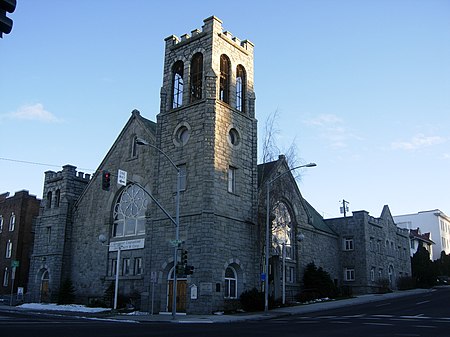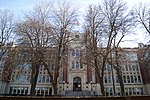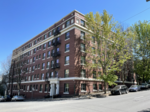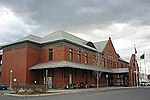Westminster United Church of Christ
Buildings and structures in Spokane, WashingtonChurches completed in 1890Churches in Spokane County, WashingtonChurches on the National Register of Historic Places in Washington (state)National Register of Historic Places in Spokane, Washington ... and 5 more
Romanesque Revival church buildings in Washington (state)Washington (state) Registered Historic Place stubsWashington (state) building and structure stubsWestern United States church stubsWikipedia page with obscure subdivision

Westminster United Church of Christ, originally the First Congregational Church, is a historic church in the Cliff/Cannon neighborhood of Spokane, Washington. It is affiliated with the United Church of Christ. The current building was built in 1890 in a Richardsonian Romanesque style and enlarged in 1927 to include larger towers and a Sunday School. Soon afterwards, the congregation merged with Westminster Presbyterian Church. The building was added to the National Register of Historic Places in 1978.
Excerpt from the Wikipedia article Westminster United Church of Christ (License: CC BY-SA 3.0, Authors, Images).Westminster United Church of Christ
West 4th Avenue, Spokane
Geographical coordinates (GPS) Address Nearby Places Show on map
Geographical coordinates (GPS)
| Latitude | Longitude |
|---|---|
| N 47.6521 ° | E -117.4176 ° |
Address
Westminster Congregational United Church of Christ
West 4th Avenue
99201 Spokane
Washington, United States
Open on Google Maps










